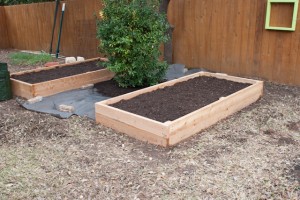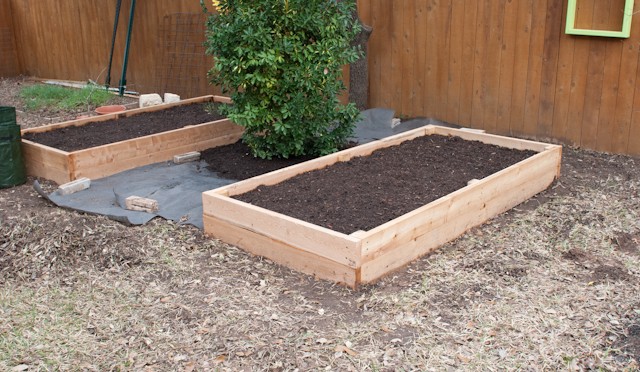Raised bed gardens are gaining momentum with urban gardeners everywhere because of the advantages they bring. I began building raised beds for my garden two years ago and started with 6″ depths. After the first two growing seasons, I realized I would have to increase that depth, simply because of the soil composition here in south central Texas.
For those of you curious about the advantages of raised bed gardens, here are a few:
- Good drainage – excess moisture is pulled away very efficiently.
- Raised bed gardens have less issue with soil compaction. Since raised beds are generally built so plants can be accessed without stepping on the soil, compaction is virtually eliminated. Roots need air and soil compaction hinders this.
- Seeds can be planted closer together. Because of the reduced soil compaction, more plants can occupy the same area.
- Raised bed garden soil warms up quicker during the spring, enabling earlier planting.
- Raised bed gardens are pleasing to they eye because they can be built and arranged to create pathways and sitting areas.
- Soil health can be more closely monitored and controlled. You can customize your soil composition based on raised bed, thereby creating optimized environments for each plant family or preference.
This year, I have made a goal for myself to eliminate as much of my back yard as possible. Why? Well, because I live in central Texas, and I would rather create a drought-resistant environment and water my food and the area wildlife, instead of a lawn.
So, we have put in a water garden, not only to create a pleasant place for us, but to create a nice habitat for birds and other creatures. They need water too! We are also filling up what is left of my back yard with plants and flowers which provide leaves for butterfly worms to eat and pupate upon and to provide seeds naturally for the birds which frequent our place. (We have bird feeders as well, but want to supplement them.)
Recently, I decided to change up how my raised beds would be constructed, starting with two new beds which would collectively eliminate approximately 180 square feet of lawn and provide 64 square feet of new garden space at a depth of 10″. I always try to leave space for wheelbarrows and such as I do a lot of hauling around my beds, continually trying to improve the soil quality.
This time, I used four 2″x6″x12′ rough cedar planks and an 8′ cedar 2″x4″. Each 12′ plank was cut into 8′ and 4′ sections, while the 2″x4″ was cut into six 16″ sections. When finished, there were 4″ posts jutting from the bottom of the raised bed frame, used for holding the bed in place.
I used 3 1/2″ decking screws to attach two 8′ sections to three 16″ posts – even on one side and keeping the second plank section flush with the first. (See below)
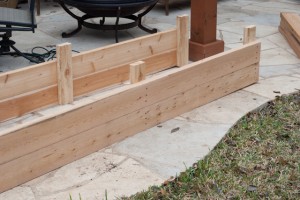
Once both 8′ sides were completed, I attached the 4′ sections to the ends, creating a nice rectangular box. It’s far easier to assembling these pieces with the frame upside down, allowing the tops to be flush. Here is the newly constructed bed.
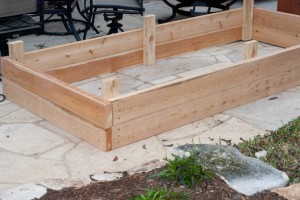
I had moistened the area of the yard I was going to clear and scraped all the sod away from the sections I was going to use as beds. Also, I always keep any sod I scrape up and then use my home-made compost sifter to separate good soil from the grass runners and roots.
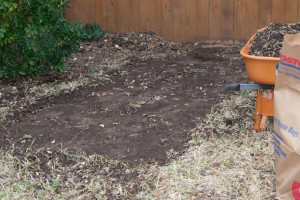
After digging six shallow post holes for each bed, we set the beds in place and then began to level the areas. This part of the process takes the longest…probably because I’m a bit particular about my beds being level. I’m trying something different with my bed soil this time – it’s a tip I heard on the Natural Gardener radio show on Saturday mornings. The tip was to place a good bit of fertilizer about four inches below where you transplant vegetable plants. The idea being that when the roots take hold and then begin growing downward, they will hit the fertilizer and the plant will have a nice growth spurt. So, I filled the bottom three inches of the beds with horse manure and the rest with a combination of organic garden soil and compost. We’ll see what happens and I’ll post results.
Here are our finished beds. (Along with a pile of grass sod I still have to sift.)
